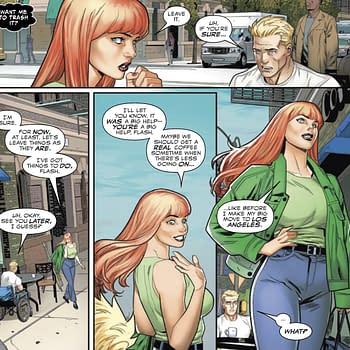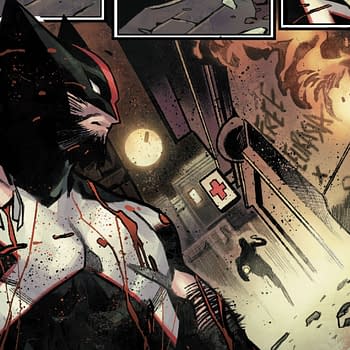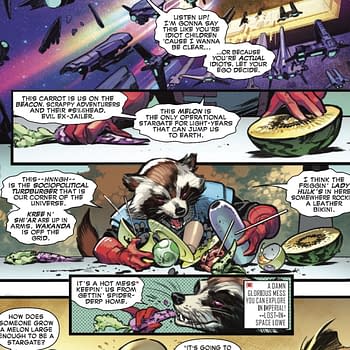Posted in: Comics | Tagged: Comics, daredevil, entertainment, HRL, jeph loeb, Tim Sale, tldr
The Origin Of Daredevil And The Yellow Costume In The New TL;DR
A lot of people know now the basic origins of Daredevil. Whether it was through the comics, the Ben Affleck film, or the Netflix series — people know that Matt Murdock, son of Battlin' Jack Murdock, saved an elderly man from being hit by a truck only to have a container of radioactive waste splash him. Matt was left blind, but his other senses heightened. Meanwhile, his father refused to throw a fight and gets killed because of it.
It's a pretty straightforward, 1960s-style origin with questionable science, mob ties, and of course, an unrealistic decision to put on spandex and fight crime. And what some of you have probably picked up from the Netflix series is Matt and Karen Page had a thing — and Matt and Elektra. But the Matt and Karen thing went on for a long time in the comics. And there was the Matt and Natasha Romanova/Black Widow relationship for a while that gets glossed over nowadays. But the thing that get missed the most — yes, he wore the black suit for a while before getting his official superhero costume — but his first costume wasn't all red.
That's right — for the first six issues of Daredevil, he work a yellow and red costume that looks like a cross between an acrobat and a pro wrestler. The large D on his torso was interesting, too.
The costume changed pretty quickly. The costume was gone by issue seven and would only be seen again in the Jeph Loeb / Tim Sale 2002 mini-series that looked at the love triangle between Murdock, Page, and Foggy Nelson in context of those first few issues. And part of the costume would pop up on a different character, Captain America's friend Demolition Man, who mixed the original suit with a Wolverine mask.
On today's TL;DR (Too Long; Didn't Read), they take a look at the Daredevil: Yellow series by Loeb and Sale, which in essence is the Daredevil origin story. It's a quick two-and-a-half-minute recap by Noah Sterling, Max Dweck, and Andy Kluthe. While I enjoy the TL;DRs, in this case, summarizing this series loses what makes it special: the expansion of the mythos and the deeper character studies. Watch the below for the humor, and then go pick up the trade.















